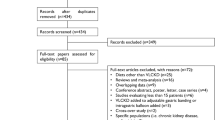Abstract
The present study evaluated the influence of magnesium on insulin resistance in obese women. A case-control study involving 114 women on the age between 20 and 50 years old, divided into two groups: control (eutrophic women, n = 59) and case (obese women, n = 55). The analysis of magnesium intake was carried out through the 3-day food record and also NutWin software version 1.5. The plasma, erythrocyte, and urinary magnesium concentrations were determined by flame atomic absorption spectrophotometry. The determinations of serum glucose and serum insulin were performed by enzymatic colorimetric method and chemiluminescence, respectively. The insulin resistance was assessed by homeostasis model assessment insulin resistance (HOMA-IR). The mean values of magnesium intake were lower than those recommended, without difference between groups (p > 0.05). All the patients who were evaluated showed adequate mean concentrations of magnesium in the plasma and erythrocyte. The urinary excretion of this mineral was lower than the reference values in both groups and did not show significant difference (p > 0.05). The values of serum glucose, serum insulin, and HOMA-IR were higher in obese women compared to the control group. A negative correlation was observed between erythrocyte magnesium and glycemic parameters (p < 0.05). Obese patients take in foods with low dietary magnesium content, and they show hypomagnesuria as a compensatory mechanism to keep the plasma concentration of this mineral in adequate levels. The correlation between the erythrocyte magnesium concentration and the parameters of glycemic control suggests the influence of this mineral on the index of insulin resistance in obese women.
Similar content being viewed by others
References
Guo S (2014) Insulin signaling, resistance, and the metabolic syndrome: insights from mouse models into disease mechanisms. J Endocrinol 220(2):T1–T23
Ye J (2013) Mechanisms of insulin resistance in obesity. Front Med 7(1):14–24
Xu E, Schwab M, Marette A (2014) Role of protein tyrosine phosphatases in the modulation of insulin signaling and their implication in the pathogenesis of obesity-linked insulin resistance. Rev Endocr Metab Disord 15(1):79–97
Elin RJ (2010) Assessment of magnesium status for diagnosis and therapy. Magnes Res 23(4):194–198
Volpe SL (2013) Magnesium in disease prevention and overall health. Adv Nutr 4(3):378S–383S
Su NY, Peng TC, Tsai PS, Huang CJ (2013) Phosphoinositide 3-kinase/Akt pathway is involved in mediating the anti-inflammation effects of magnesium sulfate. J Surg Res 185(2):726–732
Guerrero-Romero F, Rodríguez-Morán M (2013) Serum magnesium in the metabolically-obese normal-weight and healthy-obese subjects. Eur J Intern Med 24(7):639–643
Jahnen-Dechent W, Ketteler M (2012) Magnesium basics. Clin Kidney 5(suppl1):i3–i14
Simmons D, Joshi S, Shaw J (2010) Hypomagnesaemia is associated with diabetes: not pre-diabetes, obesity or the metabolic syndrome. Diabetes Res Clin Pract 87(2):261–266
World Health Organization (2000) Obesity: preventing and managing the global epidemic. Technical report series 894
World Health Organization (2008) Waist circumference and waist–hip ratio: report of a WHO expert consultation. Geneva
Anção MS, Cuppari L, Draine AS, Singulem D (2002) Programa de apoio à nutrição Nutwin: versão 1.5. São Paulo: Departamento de Informática em Saúde, SPDM, Unifesp/EPM
Institute of Medicine (1997) Dietary reference intakes for calcium, phosphorus, magnesium, vitamin D, and fluoride. National Academy Press, Washington
Whitehouse RC, Prasad AS, Rabbani PI, Cossack ZT (1982) Zinc in plasma, neutrophils, lymphocytes, and erythrocytes as determined by flameless atomic absorption spectrophotometry. Clin Chem 28(3):475–480
Elin RJ (1987) Assessment of magnesium status. Clin Chem 33(11):1965–1970
Deuster PA, Trostmann UH, Bernier LL, Dolev E (1987) Indirect vs direct measurement of magnesium and zinc in erythrocytes. Clin Chem 33(4):529–532
Noronha JL, Matuschak GM (2002) Magnesium in critical illness: metabolism, assessment, and treatment. Intensive Care Med 28(6):667–679
Ryan MF, Barbour H (1998) Magnesium measurement in routine clinical practice. Ann Clin Biochem 35(4):449–459
Martin MT, Shapiro R (1988) Atomic absorption spectrometry of magnesium. Methods Enzymol 158:365–370
Nicoll GW, Struthers AD, Fraser CG (1991) Biological variation of urinary magnesium. Clin Chem 37(10):1794–1795
Topf JM, Murray PT (2003) Hypomagnesemia and hypermagnesemia. Rev Endocr Metab Disord 4(2):195–206
Tietz NW (1995) Clinical guide to laboratory test. Saunders Company, Philadelphia
American Diabetes Association (2012) Standards of medical care in diabetes. Diabetes Care 35(1):S11–S63
Matthews DR, Hosker JP, Rudenski AS, Naylor BA, Treacher DF, Turner RC (1985) Homeostasis model assessment: insulin resistance and beta-cell function from fasting plasma glucose and insulin concentrations in man. Diabetologia 28(7):412–419
Cahill F, Shahidi M, Shea J, Wadden D, Gulliver W, Randell E, Vasdev S, Sun G (2013) High dietary magnesium intake is associated with low insulin resistance in the Newfoundland population. Plos ONE 8(3):1–8
Hedberg J, Haenni A (2012) Increased plasma magnesium concentrations 3 years after biliopancreatic diversion with duodenal switch. Obes Surg 22(11):1708–1713
Musso CG (2009) Magnesium metabolism in health and disease. Int Urol Nephrol 41(2):357–362
Guerrero-Romero F, Rodríguez-Morán M (2011) Magnesium improves the beta-cell function to compensate variation of insulin sensitivity: double-blind, randomized clinical trial. Eur J Clin Investig 41(4):405–410
De Leeuw I, Vansant G, Van Gaal L (1992) Magnesium and obesity: influence of gender, glucose tolerance, and body fat distribution on circulating magnesium concentrations. Magnes Res 5(3):183–187
Paolisso G, Pizza G, De Riu S, Marrazzo G, Sgambato S, Varricchio M, D’onofrio F (1990) Impaired insulin-mediated erythrocyte magnesium accumulation is correlated to impaired insulin-mediated glucose disposal in aged non-diabetic obese patients. Diabete Metab 16(4):328–333
Acknowledgments
The authors thank Professor Dr. José Machado Moita Neto for his contribution in the analysis and interpretation of statistical data.
Conflict of Interest
The authors declare that they have no conflict of interest.
Ethical Standards
The study was approved by Research Ethics Committee of the Federal University of Piaui, protocol number 13489613.5.0000.5214, and conducted in accordance with the Declaration of Helsinki. All patients signed a consent form.
Author information
Authors and Affiliations
Corresponding author
Rights and permissions
About this article
Cite this article
Cruz, K.J.C., de Oliveira, A.R.S., Pinto, D.P. et al. Influence of Magnesium on Insulin Resistance in Obese Women. Biol Trace Elem Res 160, 305–310 (2014). https://doi.org/10.1007/s12011-014-0044-2
Received:
Accepted:
Published:
Issue Date:
DOI: https://doi.org/10.1007/s12011-014-0044-2




